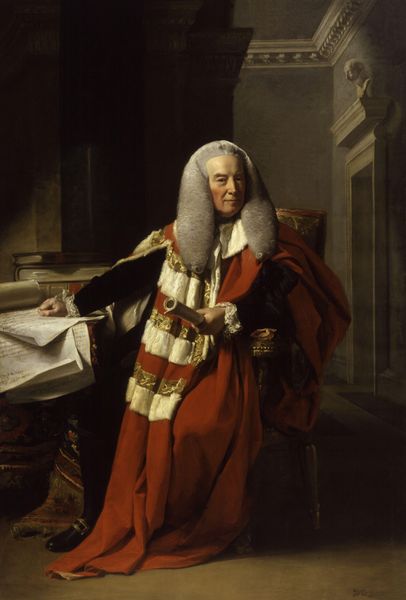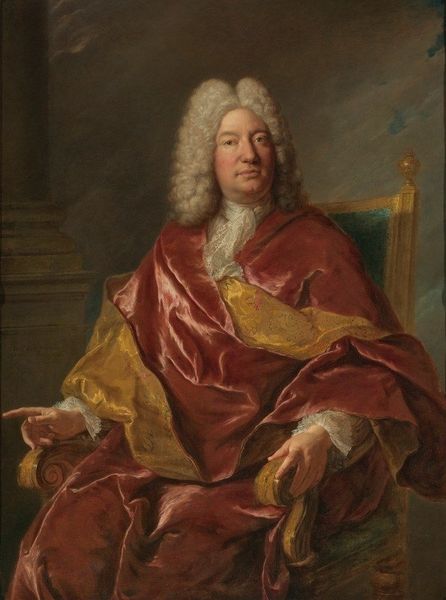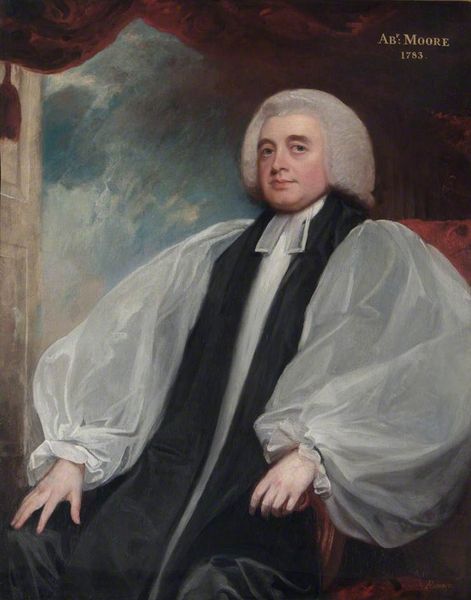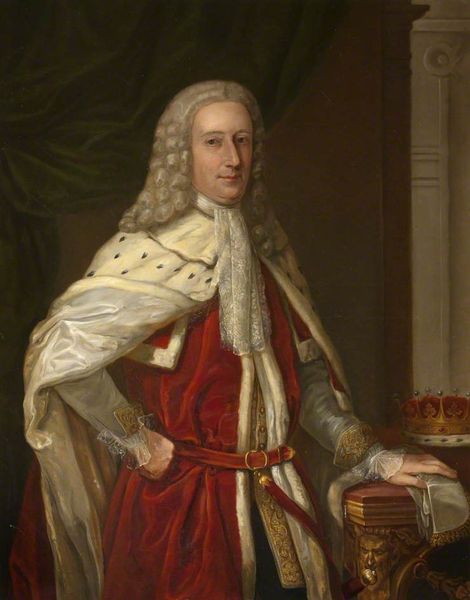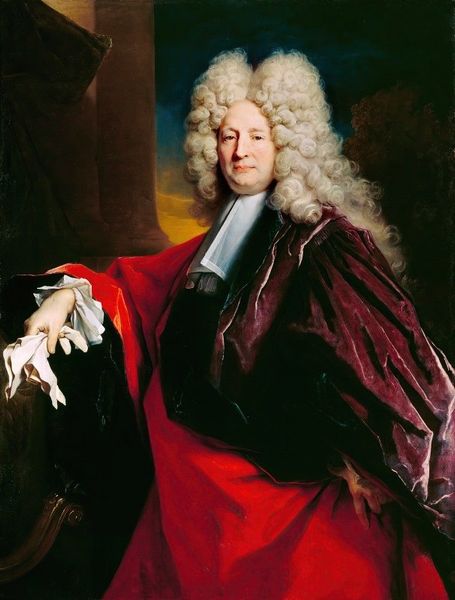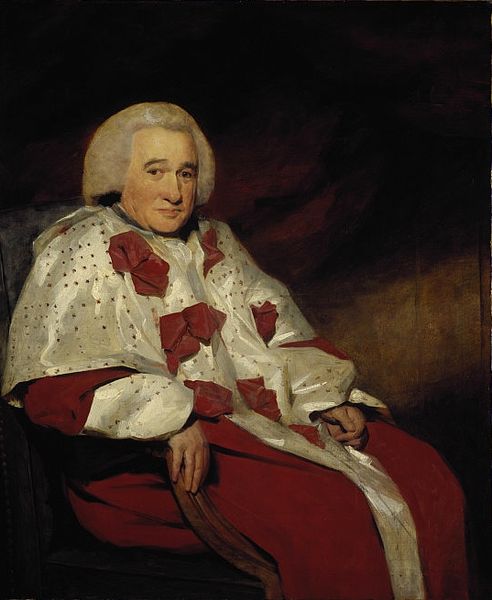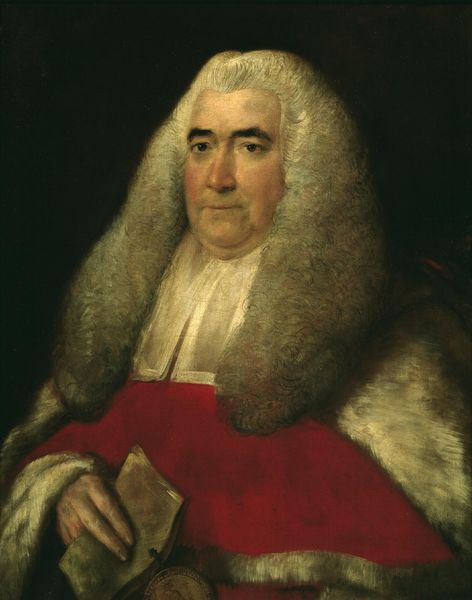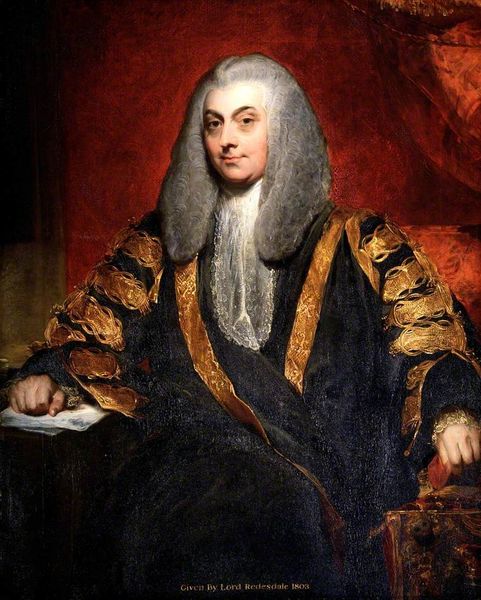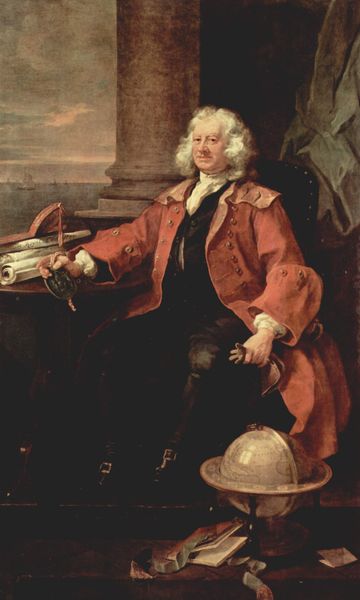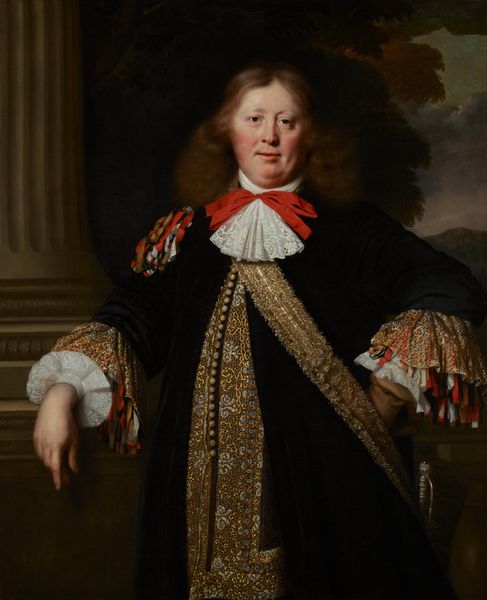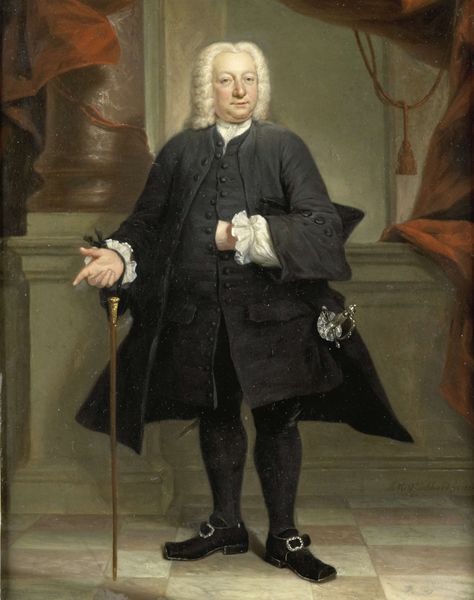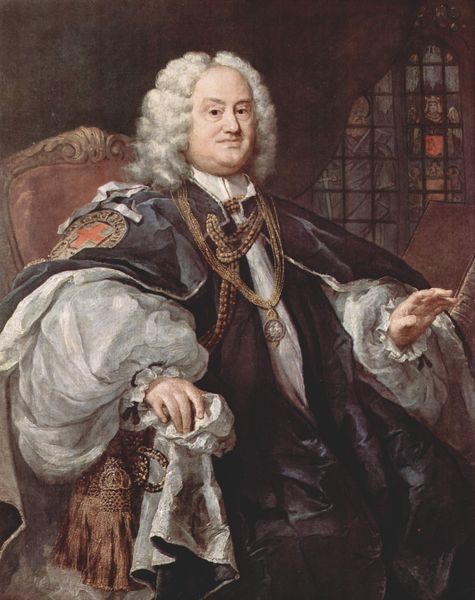
oil-paint
#
portrait
#
neoclacissism
#
oil-paint
#
oil painting
#
classicism
#
history-painting
#
academic-art
Copyright: Public Domain: Artvee
John Singleton Copley captured Baron Graham on canvas using oil paints, showcasing the opulence associated with the sitter’s position. The material qualities of the painting, from the sheen of the red robes to the fur trim, speak volumes about Graham’s status. Look closely at the way Copley has rendered the textures – the smooth surface of the column, the velvet chair, and the ermine stole. These were not merely aesthetic choices; they were calculated displays of wealth and power, made possible by global trade networks that brought luxury goods to Europe. Copley's skill lies not only in his ability to mimic textures but in his understanding of how these materials communicate social standing. The very act of commissioning such a portrait underscores the subject's place within a hierarchical society. It's a potent reminder that even seemingly straightforward portraits are deeply embedded in the material culture and social dynamics of their time, blurring the lines between art and craft.
Comments
No comments
Be the first to comment and join the conversation on the ultimate creative platform.
